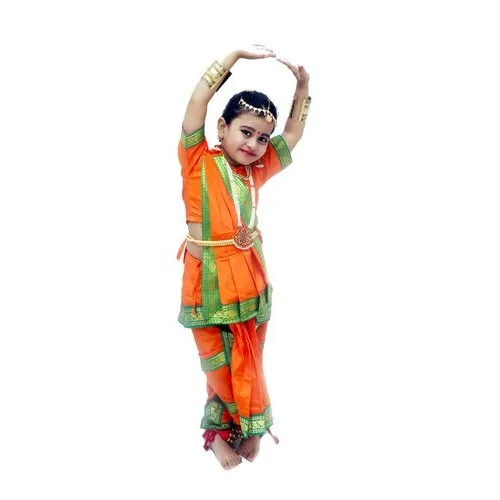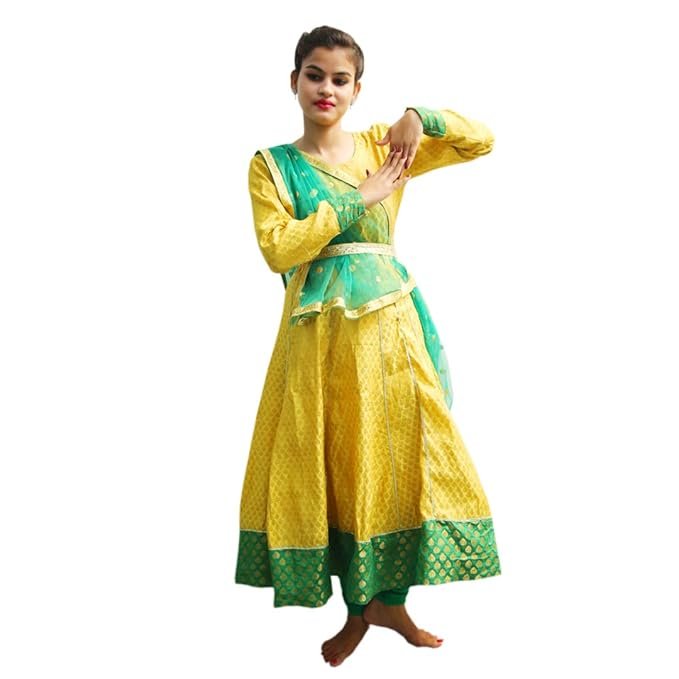Currently Empty: ₹0.00
Though the traditional gurus/ dance teachers have talked about the deep benefits of Indian Classical dance, modern-day teachers realize that it’s time to get across this message in a relatable and fun way by relating the goodness of it to modern-day situations. This makes kids realize that the ancient teachings hold value in today’s situations too.
Indian Classical dance forms are in-depth and elaborate. They involve a lot of gestures and expressions that no Hollywood/ Bollywood dance does. Learning Indian Classical dances at an early age can help kids realize their potential and provide for an excellent base to take up any kind of dance form they want. Now, let’s have a deeper look at the amazing benefits of Indian Classical Dances for kids:
Language Development: To learn Indian classical dances, an important part of it is to learn Sanskrit Shlokas. Reciting shlokas are a good substitute for learning phonetics as these involve ‘tongue twisting’ which is the same as phonetics and also develops speech clarity.
Learning Mythology: Indian Classical dances are inspired by the various events in the past and stories of the same are narrated through shlokas, music and dance. A combination of these help children learn it in a fun and easy way.
Strengthens Reflexes: When kids learn a classical dance form, the brain absorbs a physical form of Performing Arts which helps in the blooming of their reflexes and benefits them in several ways.
Acts as a Destresser: When music and dance come together, one experiences a kind of relief from stress. Also, dance therapy has been gaining wide popularity and nothing better than Indian Classical dances to help express oneself freely.
Breaks Gender Stereotypes: Indian Classical dances have been perceived with restriction when it comes to gender and they partly remain so even in the 21st century, for e.g. Bharatnatyam is majorly learnt by girls. Though this mindset has improved recently, a complete shift in mentality is yet to come. However, Indian Classical dances tell us how a male/ a female can pull off the same moves and expressions with just as much beauty.
Dedication and Motivation: Indian Classical dance forms are learnt in a proper course structure, involve levels and even exams. It motivates kids to maintain dedication and motivates them to finish what they have started with, which is an important life lesson!
Hormone Balancing: Discipline, patience, hard work and dedication can be easily inculcated through Indian Classical dance training. Most importantly, recitation of shlokas relaxes the brain and balances the 7 chakras of the body.
These are just a few of the benefits to discuss but believe me, once you enroll your little ones for any kind of Indian Classical dance training, you will witness its positivity yourself.

What is the right age for learning Indian Classical Dance?
What is the right age to start learning Bharatanatyam? There is no set age at which one should start learning Bharatanatyam. Children as young as 5 or 6 can begin to learn the basics of the dance form, but it can also be learned at any age.
Can I learn classical dance online from my home?
Virtual classes/ Live classes are usually held twice a week. Each class has a teacher with up to 3 to 6 students and students will be able to see each other, interact and imbibe skills like in a real classroom. This is extremely effective as it not only helps you learn from the teacher but also from fellow students across the globe. You will also be able to gauge how you stand with respect to other students taking the same course. The virtual class is not a standalone method of teaching. It is supplemented by several powerful self-study tools.
With technology being leveraged today, learning can become even more engaging. Interactive apps and sites which are especially designed for kids for learning Indian classical dance can offer engaging and educational material. Animation and visual tools can also help simplify difficult ideas which in turn enables younger individuals to comprehend the nuances of this subject more effectively. Moreover, online shows and performances by celebrated artists can motivate and encourage young minds to explore their dance passions.
This course is suitable for whom?
Dance course is for:
- Beginners who have never danced before
- People who already know a dance form, but want to learn a classical Indian dance form.
- People who tried learning Bharatnatyam earlier but got lost in the vastness and discontinued.
What is the purpose of classical dance?
For centuries, classical dance has been used as a form of expression, communication and storytelling. But that's not all. Classical dance also offers a range of physical and mental benefits. Physically, classical dance can help improve balance, coordination, flexibility and strength.
Which classical dance is best for beginners?
Choosing the right dance form depends on several factors, such as your interests, preferences, age, and physical abilities. If you are a beginner, it is best to try out both Bharatanatyam and Kathak and see which dance form resonates with you. Attend a few classes and see how you feel after each class.
Bharatanatyam or Kathak, which is the right dance form for me?
Choosing between Bharatanatyam and Kathak depends on your interests and preferences. If you are someone who loves slow, graceful movements and is interested in the history and mythology of South India, then Bharatanatyam may be the right dance form for you. Bharatanatyam is a deeply spiritual dance form that tells stories from Indian mythology and folklore. It requires a lot of dedication, discipline, and practice to master the various aspects of the dance form.
If, on the other hand, you are someone who loves fast-paced movements and is interested in the history and culture of North India, then Kathak may be the right dance form for you. Kathak is a dynamic and energetic dance form that combines footwork, spins, and gestures. It is a highly expressive dance form that conveys a range of emotions and moods.


